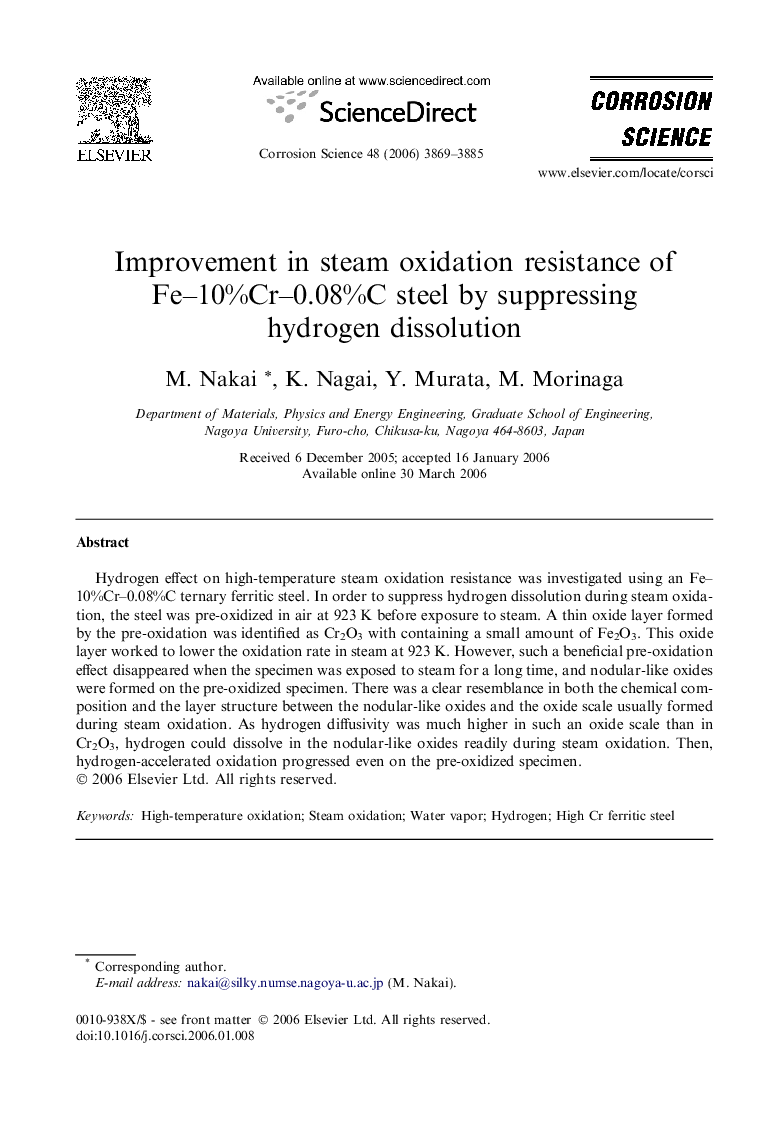| Article ID | Journal | Published Year | Pages | File Type |
|---|---|---|---|---|
| 1472326 | Corrosion Science | 2006 | 17 Pages |
Hydrogen effect on high-temperature steam oxidation resistance was investigated using an Fe–10%Cr–0.08%C ternary ferritic steel. In order to suppress hydrogen dissolution during steam oxidation, the steel was pre-oxidized in air at 923 K before exposure to steam. A thin oxide layer formed by the pre-oxidation was identified as Cr2O3 with containing a small amount of Fe2O3. This oxide layer worked to lower the oxidation rate in steam at 923 K. However, such a beneficial pre-oxidation effect disappeared when the specimen was exposed to steam for a long time, and nodular-like oxides were formed on the pre-oxidized specimen. There was a clear resemblance in both the chemical composition and the layer structure between the nodular-like oxides and the oxide scale usually formed during steam oxidation. As hydrogen diffusivity was much higher in such an oxide scale than in Cr2O3, hydrogen could dissolve in the nodular-like oxides readily during steam oxidation. Then, hydrogen-accelerated oxidation progressed even on the pre-oxidized specimen.
